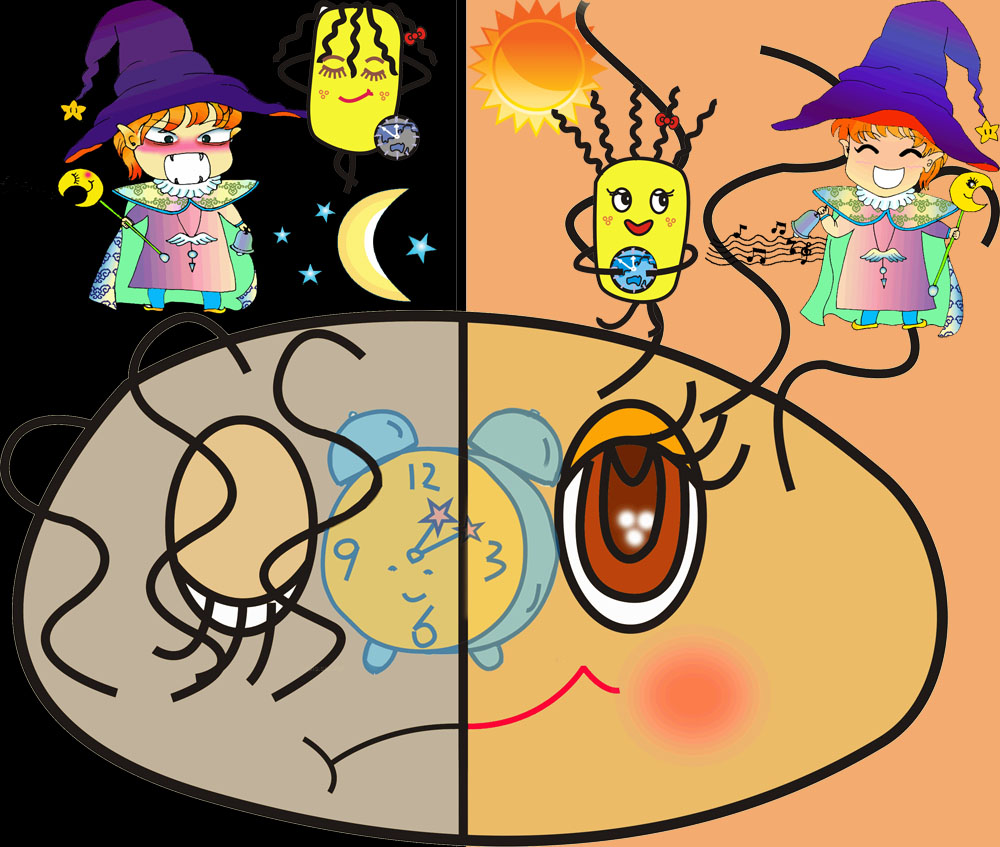Team:SJTU-BioX-Shanghai/The project
From 2009.igem.org

Project introduction. Inspired by the natural regulator of circadian bioclock exhibited in most eukaryotic organisms, our team has designed an E.coli-based genetic network with the toxin-antitoxin system so that the bacterium oscillates between two states of dormancy and activity (more...)
Contents |
Idea & background
Hypnos legend
Inspiration of our idea
It is universally acknowledged that bioclock works as a circadian regulator in most eukaryotic multicellular species. This mechanism controls higher plants’ blossom time, brings insects into metamorphosis, and also wakes us up every day.
Then comes up the crazy idea: Why cannot prokaryotes live with a bioclock?
Hence, we constructed our bacteria bioclock by utilizing the toxin-antitoxin system (TA system), which forms an oscillator between two physiological states--dormancy and activity.
Method implementation
The RelE toxin protein is an RNase that preferentially cleaves mRNAs bound to the ribosome at the second position of stop codons, and the order of its cleavage rates on different stop codons is UAG > UAA > UGA. Expression of the RelE gene has been shown to severely inhibit translation and prevent colony formation, whereas expression of the RelB antitoxin reverses these inhibitory effects. The blocked ribosome after RelE-mediated cleavage of the mRNA codon at the A site becomes a substrate for the tmRNA rescue system, which can degrade aberrant proteins made from truncated mRNAs and recycle the stalled ribosomes.
Based on these mechanisms we have designed an ingenious genetic network which functions as a bacterial bioclock oscillating between the two states of dormancy and activity. It is exciting to imagine that we manage to manipulate the lifespan of E.coli by switching the oscillator on, since the metabolic process of microbes is vastly decelerated during the dormancy state, just like bears and hedgehogs in their hibernation.
An example of how this artificial bioclock could be applied might be the preservation of scientifically valuable bacteria which mutate frequently. During the dormancy state bacteria hardly undergo mutation; therefore their genetic characteristics are retained.
Other potential applications such as biologic timing and antibiotic resistance remain intriguing to explore.
Project meaning
Thus in our circuit, we create a oscillator in E.coli, which function like a biological clock monitoring circadian rhythm in higher animals and plants. As the bacteria alternate their states between dormancy and resuscitation, there seems an inner clock within them.
The duration of a circle from dormancy to resuscitation is expected to be constant, so it may be the definition of 1 day in “E.coli world”. It sounds crazy that we can count the age of E.Coli according to the “days” they have during their life time!! Here we come into another interesting topic-----the life-span of E.coli. With a low metabolic rate in dormancy, the bacteria are much like higher animals who hibernate during winter. As we all know, bears and hedgehogs hibernate to keep a rather low metabolic rate, helping them go through food shortage in winter. So do tortoises, who maintain low metabolic rate to survive a longer life-span. Can our E.Coli with a inner clock extend their life-span via this circadian rhythm?
Next, go to Project design.
 "
"



